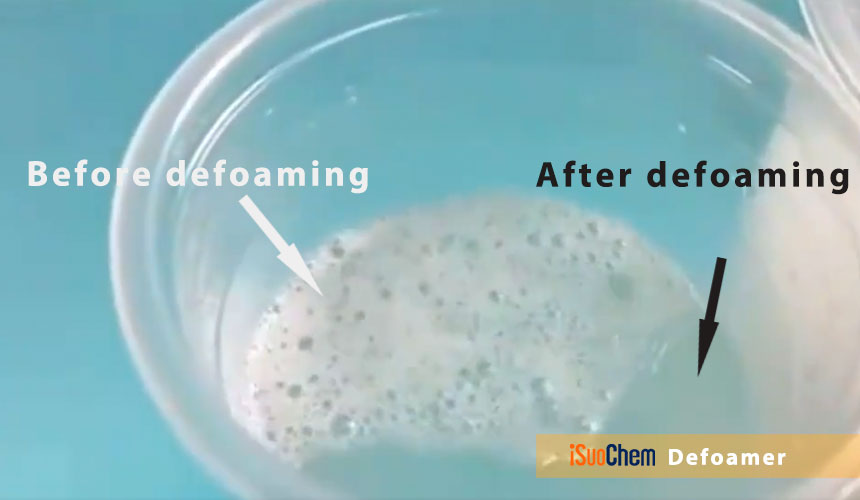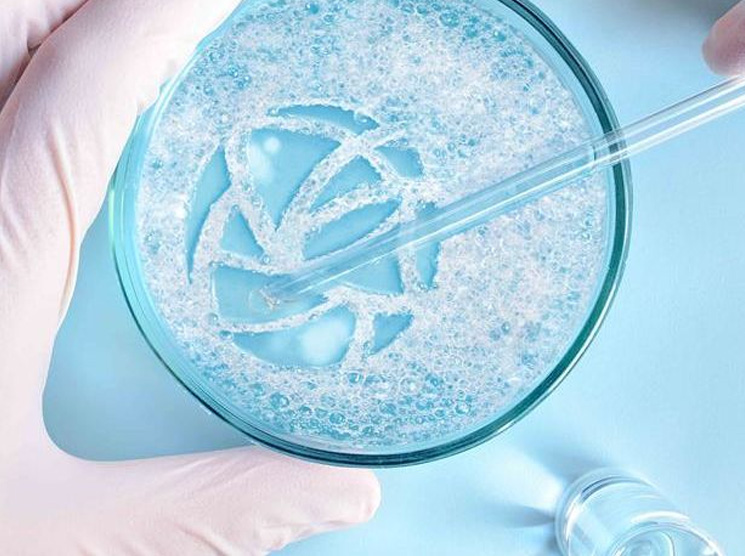Why Defoamers Are Essential in Water Treatment and Waste Management
Why Defoamers Are Essential in Water Treatment and Waste Management
Blog Article
The Duty of Defoamers in Enhancing Item Top Quality and Efficiency
Defoamers offer as essential ingredients that alleviate this issue, ensuring smoother manufacturing operations while boosting the visual and practical qualities of the last items. The choice of the suitable defoamer can be crucial to accomplishing optimum outcomes, raising crucial concerns concerning formulation compatibility and performance metrics that merit additional expedition.
Recognizing Defoamers
Recognizing the function of defoamers is crucial for keeping item high quality throughout different markets. Defoamers are chemical additives made to decrease and protect against the formation of foam in fluid systems, which can adversely impact processes such as blending, loading, and surface stress. Foaming can lead to ineffectiveness, product flaws, and jeopardized aesthetic appeal, making defoamers an essential element in producing procedures.
In industrial applications, defoamers assist to improve item consistency and stability. In the paint and finishes industry, foam can interfere with the application process and the final coating. In food and beverage manufacturing, too much foam can impede bottling and product packaging performance. The effective use of defoamers not just ensures smoother production procedures however also adds to remarkable product performance.
Additionally, the selection and formulation of a defoamer have to line up with particular application demands, such as compatibility with various other ingredients, effectiveness under varying temperature and pH problems, and possible regulative restrictions. Eventually, understanding defoamers' features and their importance in numerous formulas is important for enhancing production and guaranteeing the best quality final result.
Kinds of Defoamers
Defoamers can be categorized right into numerous kinds based on their structure and system of action. The primary types consist of silicone-based, non-silicone organic, and not natural defoamers.
Silicone-based defoamers are amongst the most effective, largely as a result of their capability to spread out promptly on the fluid surface area and interrupt foam formation. Their unique chemical structure enables premium stability, making them ideal for high-temperature applications and atmospheres with varying pH degrees.
Non-silicone natural defoamers, frequently composed of all-natural oils or fats, are valued for their biodegradability and reduced poisoning. These are generally made use of in food and beverage applications where safety and environmental influence are extremely important.
Inorganic defoamers, which include substances like talc or calcium carbonate, act by increasing the thickness of the liquid, consequently reducing foam security. They are often made use of in commercial processes where compatibility with other products is not a worry.
Each sort of defoamer has distinct benefits and restrictions, permitting tailored solutions relying on the details foaming concerns run into in numerous applications. Recognizing these distinctions is vital for maximizing efficiency and attaining desired item top quality.
Applications Throughout Industries
Many sectors take advantage of defoamers to improve product quality and operational efficiency. In the food and drink sector, defoamers are crucial in procedures such as brewing and dairy manufacturing to avoid foam formation, which can bring about inefficiencies and item disparity. By regulating foam, manufacturers can make certain far better return and a more uniform item.
In the pharmaceutical sector, defoamers play an essential duty in the formulation of liquid medicines, where too much foam can restrain blending and exact application. Their use helps preserve the stability of the formulas and assists in smoother manufacturing procedures.
The paint and layers market likewise relies upon defoamers to improve the efficiency of products Web Site throughout application. By decreasing foam, these ingredients guarantee a smoother coating and enhance the visual high qualities of the end product.

Benefits of Utilizing Defoamers
While the application of defoamers varies across sectors, their advantages constantly boost product quality and procedure effectiveness. One significant benefit is the decrease of foam formation during manufacturing processes, which can or else result in manufacturing hold-ups and inconsistencies in item top quality. By minimizing foam, defoamers make it possible for a smoother flow of products, promoting a lot more effective procedures and decreasing the chance of devices breakdowns.
In addition, using defoamers can improve the look and texture of end products. In fields such as finishings, paints, and food processing, extreme foam can endanger the aesthetic aesthetics and overall high quality, while the suitable defoamer application ensures a consistent finish and preferable features. Defoamers can contribute to set you back savings by decreasing waste throughout production and optimizing the usage of raw products.

Choosing the Right Defoamer
Choosing the ideal defoamer is essential for maximizing production processes and making certain product high quality. The choice of defoamer affects not just the efficiency of foam control however also the total performance attributes of the end product. Elements to take into consideration consist of the kind of application, the chemistry of the formula, and the ecological problems under which the product will certainly be made use of.
Various sectors may call for specific defoamer types, such as silicone-based, organic, or polymeric defoamers. Recognizing the compatibility of the defoamer with the main components is necessary to stay clear of negative reactions that could jeopardize product stability. Furthermore, the defoamer's performance in various temperature levels and pH degrees have to be reviewed to ensure regular efficiency.
Evaluating the defoamer in small-scale applications can give valuable insights into its efficiency and viability. Consideration of governing conformity, specifically in food, pharmaceuticals, and cosmetics, is paramount in choosing a defoamer. Ultimately, a detailed analysis of these aspects will result in the option of a defoamer that not just regulates foam effectively yet additionally improves the quality and performance of the final product.
Verdict

Finally, defoamers are essential ingredients that considerably improve product high quality and efficiency throughout different sectors. By successfully lowering foam formation, these representatives not only enhance functional effectiveness however likewise contribute to the practical and aesthetic integrity of items. The calculated option and application of defoamers result in cost savings, enhanced source usage, and raised client satisfaction. In general, the significance of defoamers in commercial processes can not be overstated, as they play an essential duty in accomplishing top quality and constant end results.
Frothing can lead to ineffectiveness, item problems, and jeopardized visual allure, making defoamers a critical element in manufacturing procedures.

Report this page